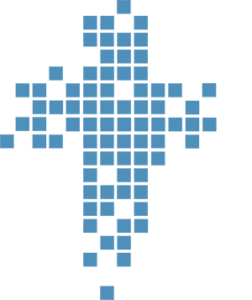The National Catholic Education Association (NCEA) and Foundations and Donors Interested in Catholic Activities’ (FADICA) 2016 research on parent perceptions of Catholic schools as reported in The Catholic School Choice: Understanding the Perspectives of Parents and Opportunities for More Engagement identified four major directional priorities that Catholic schools should focus on in order to attract more students.
- Both emphasizing the strength of and increasing the rigor of the school’s academic program
- “Catholic schools need to clearly differentiate themselves from public schools in a way that also meets (or exceeds) parents’ requirements.” -The Catholic School Choice
- Demystifying tuition as many families assume they cannot afford a Catholic education
- “Catholic schools should consider a second communications effort specifically focused on increasing parents’ confidence in their ability to afford tuition at a Catholic school.” -The Catholic School Choice.
- Offering a diverse learning environment
- “Parents value diverse environments as they are seen as critical to their child’s long-term success in a global marketplace.” -The Catholic School Choice
- Taking a more integrated marketing approach
- “There is an immediate opportunity for Catholic schools to strengthen their position within an increasingly competitive educational landscape nationwide” -The Catholic School Choice
Meitler’s experience in working with schools across the country for the past 49 years confirms the findings of this research study. It isn’t unusual for schools to overemphasize their Catholicity and underemphasize their academic rigor. Yet, the research reveals that in most cases a false perception exists among parents who don’t send their child/ren to a Catholic school, that Catholic schools are really good at being Catholic and not as strong in their academic program. The reality is most are academically rigorous high school and college preparatory Catholic schools who simply aren’t equally marketing their academic programing with their faith formation programming.
Similarly, when the Meitler team runs focus groups with parents of children not currently enrolled in Catholic schools, lack of affordability is most often noted as a primary deterrent. Yet, when parents are made aware of a school’s tuition assistance program, state-sponsored tuition assistance programs, and scholarship opportunities, they are more likely to consider a Catholic school for their child. In fact, the 2016 research study revealed only one in three families who lived in a school choice state were even aware of the fact that they live in a state that provides vouchers or tax credits for Catholic school tuition.
In Meitler’s experience, surveys and interviews confirm the desire on behalf of most parents for a learning environment that is ethnically and racially diverse, serves children from a broad range of socio-economic and religious backgrounds, offers support to students with exceptional learning needs, and differentiates instruction. Too often parents perceive Catholic schools as not keeping pace with the larger society and believe it to be narrower in its teaching.
Lastly, there is a tendency in our Catholic schools to utilize a one size fits all marketing message rather than a more targeted marketing approach. With just a few simple steps, schools can better identify their target market and the best communication form to reach that market. A review of the school’s website and marketing materials is a good place to start. Do your messages contain a balance between promoting the school’s academic strengths and commitment to a Catholic culture? Do your marketing materials reflect the student experience? Are you proactively communicating what matters to parents? Do you advertise a learning environment that is diverse and utilizes modern/cutting-edge technology? While there are many more questions to consider when putting together a marketing plan, it all begins with moving away from a one size fits all method to developing a target market profile.
If you haven’t read The Catholic School Choice: Understanding the Perspectives of Parents and Opportunities for More Engagement, I invite you to do so. While the research is now five years old, our experiences show it is still relevant today.

 In July of 2020, the
In July of 2020, the 